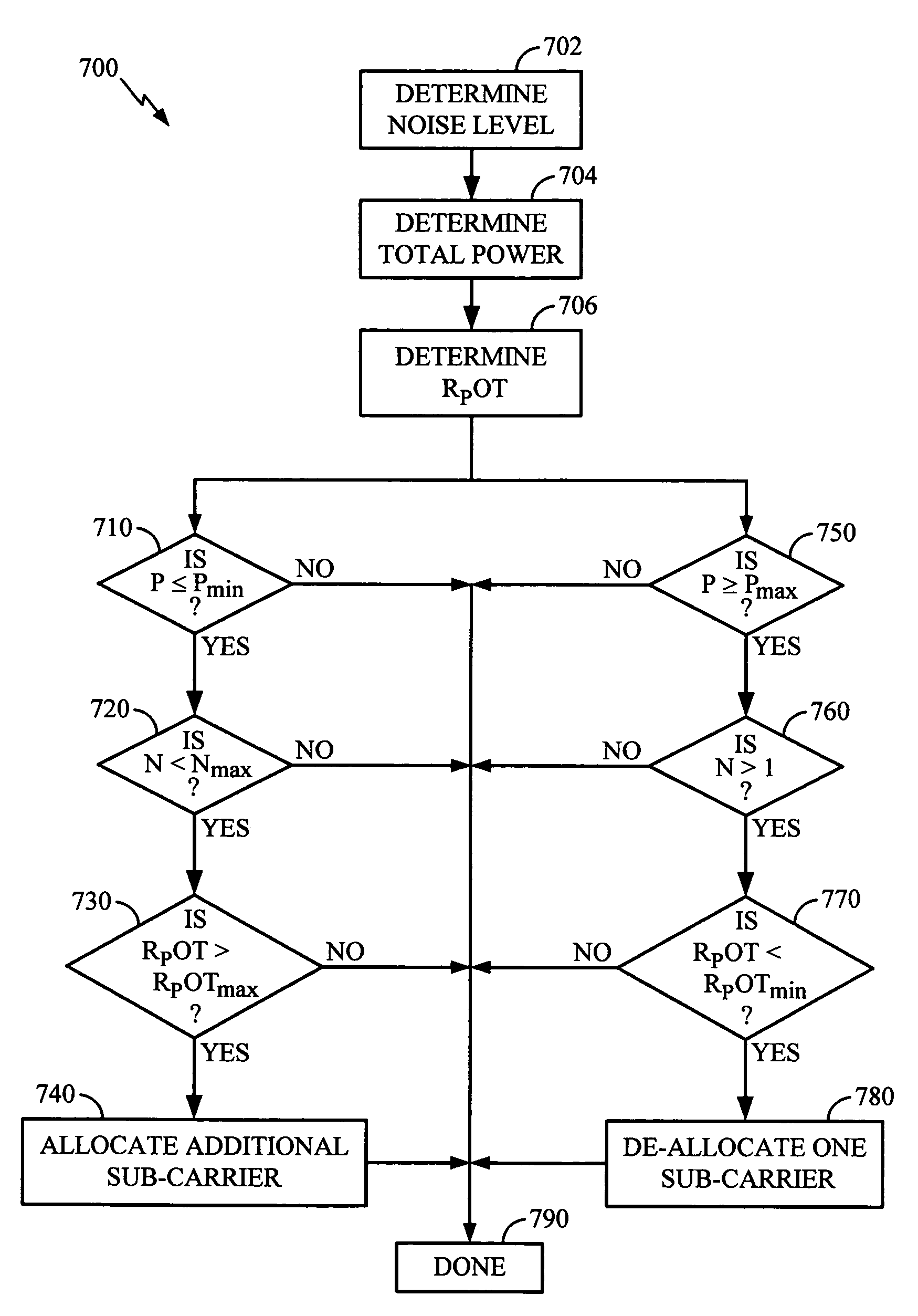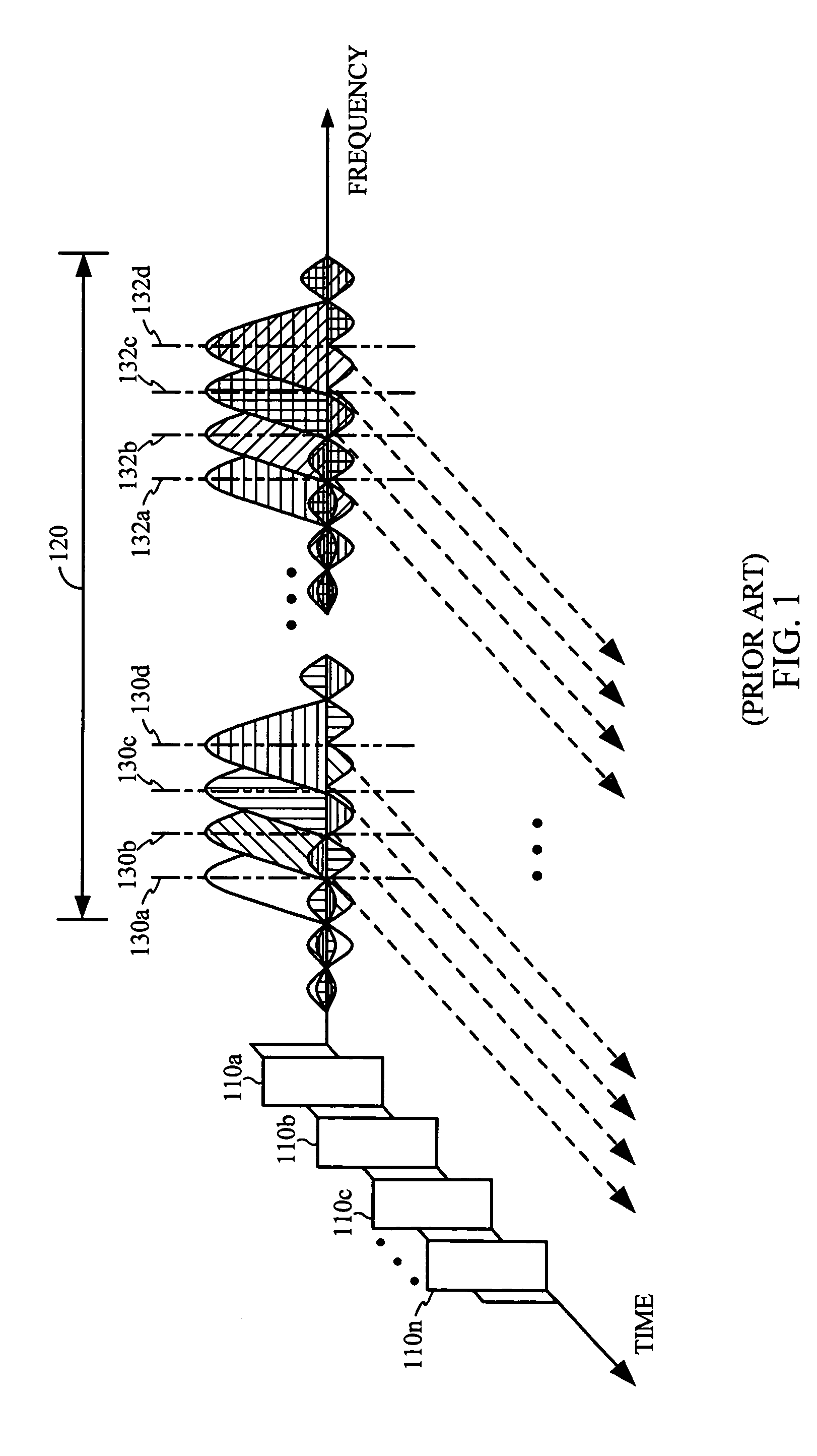Power control and scheduling in an OFDM system
a power control and subcarrier technology, applied in the field of wireless communications, can solve the problems of affecting the number of subcarriers assigned to a particular user over time, affecting the efficiency of data transmission, and limiting the amount of frequency spectrum or bandwidth that is allocated to a communication system
- Summary
- Abstract
- Description
- Claims
- Application Information
AI Technical Summary
Benefits of technology
Problems solved by technology
Method used
Image
Examples
Embodiment Construction
[0027]It is advantageous to power control different users in an OFDM system such that the ratio of signal over the noise in the signal bandwidth is the same for all users. In an OFDM system, it is advantageous to maintain the same ratio of signal to noise in each sub-carrier frequency band for all users. Maintaining an equal sub-carrier signal to noise helps to minimize inter-carrier interference. Maintaining equal sub-carrier signal to noise ratios also reduces the dynamic range of the receiver. Reducing the dynamic range of the receiver eases the requirements on the power amplifiers used in the receiver, potentially reducing the cost of the receiver. The OFDM transmit power spectral density for all users can be maintained within a predefined range by determining the signal to noise ratio in each sub-carrier frequency band and adjusting the number of sub-carriers allocated to the communication link based in part on the signal to noise ratios.
[0028]A functional block diagram of a ce...
PUM
 Login to View More
Login to View More Abstract
Description
Claims
Application Information
 Login to View More
Login to View More - R&D
- Intellectual Property
- Life Sciences
- Materials
- Tech Scout
- Unparalleled Data Quality
- Higher Quality Content
- 60% Fewer Hallucinations
Browse by: Latest US Patents, China's latest patents, Technical Efficacy Thesaurus, Application Domain, Technology Topic, Popular Technical Reports.
© 2025 PatSnap. All rights reserved.Legal|Privacy policy|Modern Slavery Act Transparency Statement|Sitemap|About US| Contact US: help@patsnap.com



